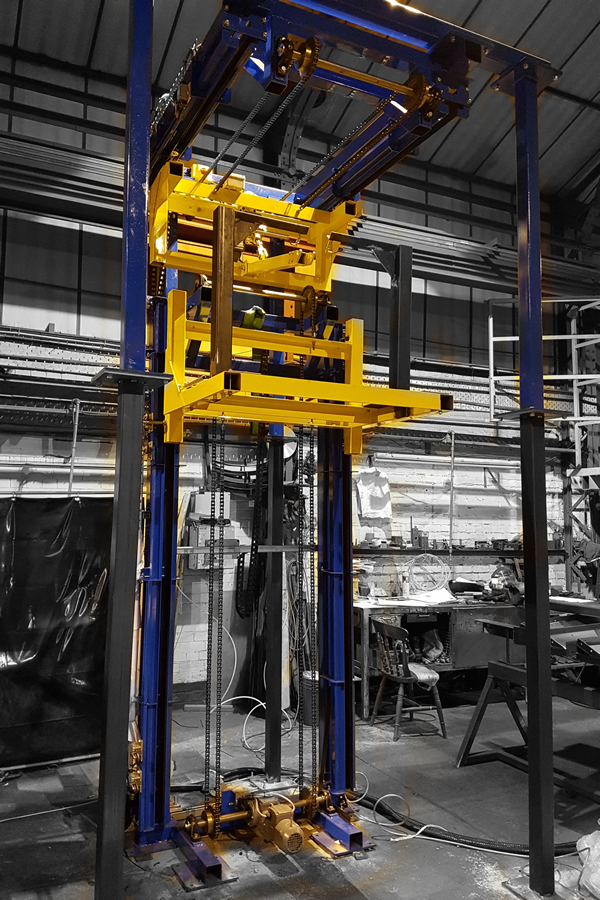Leading Lift Companies in London: Supplying Exceptional Service and Assistance
Delving Into the Globe of Lifts: Common Issues Faced by Numerous Lift Mechanisms
As we browse via the vertical transportation systems of contemporary structures, lifts stand out as a vital element of our day-to-days live. However, behind their seamless operation lies a globe of elaborate mechanisms that can in some cases run into challenges. From hydraulic elevators to grip systems and machine-room-less designs, each lift kind features its collection of typical issues. Recognizing these challenges is important for making sure the smooth performance of these crucial systems. Let's check out the complexities that underlie the operation of elevators and the prospective concerns that can arise, dropping light on the detailed internet of lift systems.
Hydraulic Elevators
Hydraulic lifts, typically liked for low-rise buildings, make use of fluid stress to regulate the motion of the lift cars and truck (lift repair companies). This system entails a hydraulic pump pushing oil right into a cylinder, creating the lift to move in the wanted instructions. While hydraulic elevators are known for their smooth and peaceful operation, they do include their very own collection of usual concerns
One prevalent trouble with hydraulic lifts is oil leakage. The seals in the hydraulic system can break with time, causing oil infiltration. If left unaddressed, this not only creates a mess however can additionally impact the elevator's performance. Furthermore, problems with the control system, such as faulty valves or a malfunctioning pump, can cause disruptions in the lift's motion.
Regular maintenance and punctual repair work are necessary to make certain the smooth performance of hydraulic elevators. By attending to these usual issues proactively, structure owners can reduce downtime and ensure the safety and efficiency of their upright transport system.
Grip Lifts
When considering upright transportation systems in buildings, one more typical type apart from hydraulic lifts is the grip elevator. Grip lifts operate making use of a system of ropes and counterweights that relocate the lift car by clutching onto the hoist ropes. This device permits smoother and quicker upright transport compared to hydraulic systems.
One of the common problems dealt with by traction lifts is rope wear. The constant movement of the ropes within the traction system can bring about deterioration over time, possibly creating the elevator to malfunction or come to be unsafe for usage. Regular assessments and maintenance of the ropes are vital to ensure the lift's correct functioning and safety.
An additional issue that grip lifts may run into is associated with the control system. Problems with the control system can result in problems such as irregular motion, delays in feedback times, or even complete closures. Regular screening and upkeep of the control system are vital to stop such concerns and ensure the elevator's reliability.
Machine-Room-Less (MRL) Elevators

Among the vital elements of MRL lifts is the compact gearless grip equipment that is installed within the hoistway. This machine efficiently drives the elevator automobile without the need for large equipment discovered in conventional grip elevators. Additionally, MRL elevators generally make use of a counterweight system to stabilize the vehicle, further improving their energy effectiveness.
Despite their advantages, MRL elevators may deal with challenges associated with maintenance and fixing due to the constrained area for tools installment. Access for servicing elements within the shaft can be restricted, requiring specialized training for specialists. Proper upkeep routines and routine evaluations are critical to make certain the ongoing smooth operation of MRL lifts.
Overloading and Weight Limitation Issues
Overloading and weight limitation issues are critical problems in lift procedures. Elevator makers layout lifts with details weight abilities to make sure passenger safety and security and devices durability.
When lifts are overwhelmed, it puts too much stress on the motor, cable televisions, and other parts, potentially triggering failures or malfunctions. If they discover excess weight, safety devices visite site such as sensing units and overload sensing units are in location to prevent elevators from see moving. Additionally, surpassing weight limits can result in raised energy usage and damage on the elevator system.
To minimize straining problems, building managers ought to prominently show weight restrictions in elevators and inform occupants on the value of sticking to these limitations - lift repair companies. Regular maintenance checks by certified specialists can additionally aid make certain that lifts are operating within risk-free weight specifications. By addressing overloading and weight restriction concerns proactively, building owners can enhance elevator security and efficiency
Electrical System Failings
Exceeding weight limitations in elevators can not just bring about mechanical concerns but likewise potentially contribute to electrical system failures within the lift infrastructure. Electric system failings are a critical worry in elevator operation, as they can trigger unforeseen shutdowns, malfunctions, or perhaps safety and security hazards. One common electric issue is the getting too hot of parts as a result of excessive existing flow triggered by overloading the lift past its capability. This can cause harm to the wiring, control, or motor systems, causing costly repair work and downtime.
Normal maintenance and assessments are crucial to identify and attend to prospective article electrical issues without delay, ensuring the effective and safe procedure of lift systems. By sticking to weight limits and carrying out regular electric system checks, building owners can alleviate the danger of electrical failings in lifts.
Final Thought

Hydraulic lifts, typically favored for low-rise structures, utilize fluid stress to manage the activity of the elevator cars and truck.When taking into consideration upright transportation systems in structures, one more common type apart from hydraulic elevators is the traction lift. Grip lifts operate using a system of ropes and weights that move the lift cars and truck by clutching onto the hoist ropes. Unlike conventional lifts that need a separate maker room to house the tools, MRL elevators integrate most of the components within the shaft, eliminating the demand for a committed device area.In conclusion, elevators deal with typical problems such as hydraulic breakdowns, traction system failures, and electrical system problems.